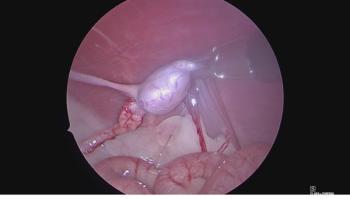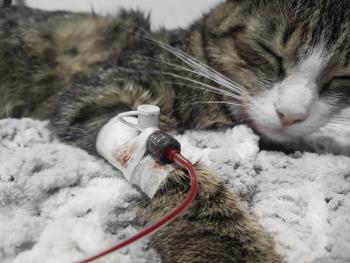
A capnography hack for your pint-sized veterinary patients
The end-tidal carbon monoxide monitor is one of the most insightful pieces of anesthesia monitoring equipment available, but that doesn't mean it isn't without its challenges. Use this hack to increase its accuracy with petite veterinary patients.
I'd like to take this opportunity to tell you about my undying love for a little piece of equipment called the end-tidal carbon monoxide monitor (ETCO2), or the capnograph. Swoon.
The clinical uses of capnography reach far beyond its ability to tell if your patient is hypo- or hyperventilating. For those of you who are not yet using capnography on your surgical patients, it measures CO2 at the completion of exhalation and roughly-emphasis on roughly-correlates to the CO2 present in an arterial sample.
Get more advice from the original Anesthesia Nerd
As you may have guessed, this isn't the first time we've tapped into Tasha McNerney's wealth of anesthesia nerdery (and catch all her pointers for preventing pain and performing safer anesthetic episodes in person at a
>Tasha's top anesthesia and pain management picks
>Three things Tasha wishes vet techs would stop doing
The ETCO2 monitor is noninvasive but gives you a wide range of information-and not only about things going on within your patient (e.g. cardiac output estimation, ventilation status). Capnography can also tip you off to problems brewing within your anesthesia machine or breathing system (e.g. leaks, stuck valves, kinked hoses). The ETCO2 monitor is truly one of the most insightful pieces of anesthesia monitoring equipment available.
However, capnography can admittedly be challenging with very small animals, such as our Yorkie, Morkie and Chorkie (is that thing?) patients that weigh about as much as a bunch of bananas. When we place these petite patients on nonrebreathing circuits with higher oxygen flow rates, the sidestream ETCO2 adaptor can add excessive dead space to the system. But I have a hack, or “
Before I divulge, it's important to note that the needle trick can only be done with a sidestream monitor when the readings on your ETCO2 monitor aren't accurate due to high oxygen flow rates and the sampling port being a significant distance from the measuring site (inside the anesthesia machine).
The needle trick. (Photo courtesy of Tasha McNerney)The needle trick involves inserting a 22-ga needle into the endotracheal tube just after the circuit connector (see photo for reference). Rather than adding an adaptor, the tubing from the sidestream monitor can then be attached directly to the needle, thereby decreasing the distance between the sampling site and the measurement site.
Just be sure to discard the punctured endotracheal tube after the procedure. It's a small price to pay for a more accurate reading and better patient safety.
Tasha McNerney is an anesthesia nurse at CARES (Center for Animal Referral and Emergency Services) in Langhorne, Pennsylvania, and is the founder of the Anesthesia Nerds Facebook group.
Newsletter
From exam room tips to practice management insights, get trusted veterinary news delivered straight to your inbox—subscribe to dvm360.




